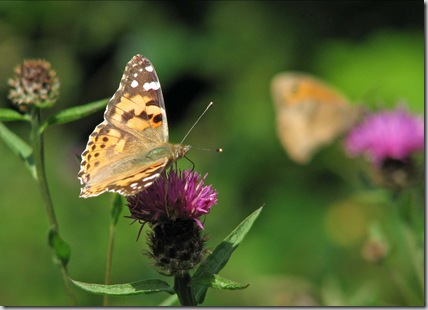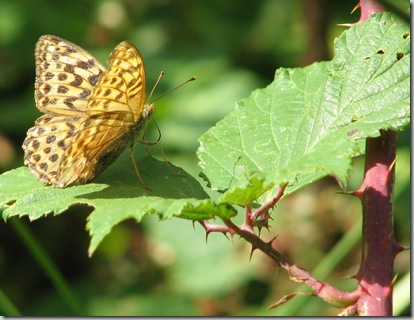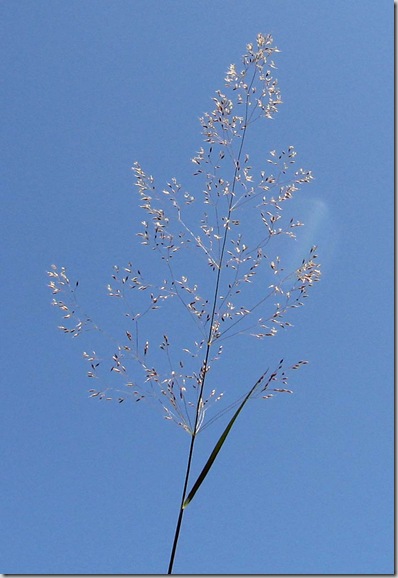The woods are perhaps at their best now for summer butterflies. On a walk yesterday we saw many different species.
Perhaps the commonest was the hedge brown or gatekeeper (Pyronia tithonus) easily recognisable by its bright orange-brown patches and double-pupilled eye spots. The picture above is of a male with the dark brown scent mark streaking the centre of the forewings.
There are still many painted ladies (Vanessa cardui) on the wing in the woods, but they are not so abundant as they were a week or two ago. These butterflies are home bred examples resulting from eggs laid by the wave of immigrants earlier in the year. Many may now have headed south again into continental Europe as none of their stages can survive a British winter.
The butterfly in the background above is a meadow brown and the powerful and aggressive painted ladies have been able, perhaps, to get the best of the nectar to the disadvantage of many of our resident species.
A highlight of our walk was the company of a silver-washed fritillary (Argynnis paphia) which sailed alongside us down a ride, settling from time to time on sunny spots of foliage. The picture is of a rather worn female. She will lay her eggs on the trunks of oak trees where violets grow. The young caterpillars will hibernate over winter and start to feed up next spring so that we can look forward to a new generation of these wonderful butterflies in 2010.



